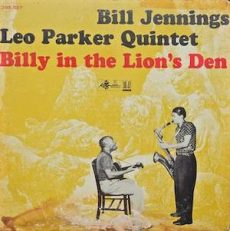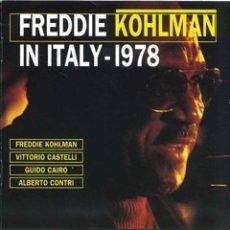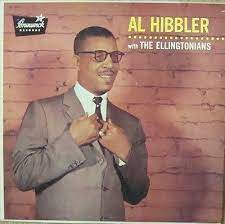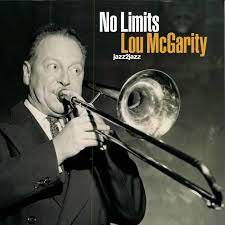
Daily Dose Of Jazz…
Bill Jennings was born September 12, 1919 in Indianapolis, Indiana and started out with his twin brother, Albert, in a trio called The Three Spades. He would later work with Louis Jordan and his Tympany Five, Wild Bill Davis Trio, Jack McDuff, Willis “Gator” Jackson, Bill Doggett, Louis Armstrong, Chris Powell And His Five Blue Flames, Hot Lips Page and others.
Recording as both a leader and a sideman, Bill has influenced numerous musicians in the genres of jazz, soul, R&B, and blues guitar. B.B. King often mentioned Jennings as one of his biggest influences. He recorded with such artists as Leo Parker, King Curtis, Ella Fitzgerald, Jerry Daniels of the Inkspots, Kenny Burrell, Betty Roche and Stuff Smith.
His unique ability to play in many styles included swing, bop, jump blues, R&B, and pop. Jennings played on Fever by Little Willie John, which made the Billboard R&B chart in the U.S. and peaked at number 24 on the Billboard Hot 100.
A left-handed player, Bill played guitar upside down, with the high strings at the top, which gave him a different approach to phrasing and bending the strings. Later in his career, he lost a finger on his fretting hand and began playing bass guitar.
Guitarist and composer Bill Jennings, who was described as “The Architect Of Soul Jazz”, transitioned at Veterans Hospital in Indianapolis on November 29, 1978 at the age of 59.
More Posts: bandleader,composer,guitar,history,instrumental,jazz,music

Daily Dose Of Jazz…
Louis Freddie Kohlman was born on August 25, 1918 in New Orleans, Louisiana and studied under the famed drummer Louis Cottrell, Sr., and Manuel Manetta. He began playing professionally as a teenager, working with A. J. Piron, Joe Robichaux, Papa Celestin, and Sam Morgan.
Moving to Chicago, Illinois in the middle of the 1930s, he played with Albert Ammons, Stuff Smith, Earl Hines, and Lee Collins. After returning to New Orleans in 1941, he led his own band from 1944. Among the musicians in his band was pianist Dave “Fat Man” Williams. In the mid-1950s he played briefly with Louis Armstrong and recorded as a leader with the Jambalaya Four in 1953. He moved back to Chicago and became the house drummer at Jazz, Ltd. There he played with everyone from Billie Holiday to Art Hodes before once again returning to New Orleans in the 1960s.
Back home he played with Louis Cottrell, Jr., the Dukes of Dixieland, and the Onward Brass Band. In 1969 he appeared at the New Orleans Jazz Festival. As a member of the Preservation Hall Jazz Band, he traveled throughout the United States and overseas.[1]
Playing European festivals with his own groups in the 1970s and 1980s, Freddie recorded with Chris Barber and Dr. John in 1980, and also appears on record with Albert Nicholas, Art Hodes, Bob Wilber, Harry Connick, Jr., the Excelsior Brass Band, and the Heritage Hall Jazz Band.
Kohlman appeared in several films, including Pete Kelly’s Blues, Pretty Baby and Angel Heart.
Drummer, vocalist and bandleader Freddie Kohlman transitioned of cancer at his home in New Orleans, aged 72 on September 29, 1990.
More Posts: bandleader,drums,history,instrumental,jazz,music,vocal

Daily Dose Of Jazz…
Albert George Hibbler was born on August 16, 1915 in Tyro, Mississippi and was blind from birth. At the age of 12 he moved to Little Rock, Arkansas where he attended Arkansas School for the Blind where he joined the school choir. He went on to begin working as a blues singer in local bands before failing his first audition for Duke Ellington in 1935. However, after winning an amateur talent contest in Memphis, Tennessee, he was given his start with Dub Jenkins and his Playmates. He later joined the Jay McShann band in 1942, followed with replacing Herb Jeffries a year later and joining Ellington’s orchestra.
He stayed with Ellington for almost eight years, and featured on a range of Ellington standards, including Do Nothin’ Til You Hear From Me, I Ain’t Got Nothin’ But the Blues and I’m Just a Lucky So-and-So. Do Nothin’ lyrics were written specifically for him, reaching #6 on the Billboard pop chart and #1 for eight weeks on the Harlem Hit Parade in 1944.Considered undoubtedly the best of Ellington’s male vocalists, while with Ellington, he won the Esquire New Star Award in 1947 and the Down Beat award for Best Band Vocalist in 1949.
Leaving Ellington’s band in 1951 after a dispute over his wages, Al then recorded with various bands including those of Johnny Hodges and Count Basie, and for various labels including Mercury and Norgran. His biggest hit was Unchained Melody, which reached #3 on the US pop chart, sold over one million copies, and was awarded a gold disc. Its success led to network appearances, including a live jazz club remote on NBC’s Monitor. His other hits were He, 11th Hour Melody, Never Turn Back and After the Lights Go Down Low.
In the late 1950s and 1960s, Hibbler became a civil rights activist, marching with protestors and getting arrested in 1959 in New Jersey and in 1963 in Alabama. The notoriety of this activism discouraged major record labels from carrying his work, but Frank Sinatra supported him and signed him to a contract with his label, Reprise Records. However, he made very few recordings after that, occasionally doing live appearances through the 1990s.
In 1971, he sang two songs at Louis Armstrong’s funeral. In 1972 he made an album, A Meeting of the Times, with another fiercely independent blind musician, the multi-instrumentalist Rahsaan Roland Kirk. Baritone vocalist Al Hibbler transitioned on April 24, 2001 at Holy Cross Hospital in Chicago, Illinois at the age of 85.
More Posts: history,instrumental,jazz,music,vocal

Daily Dose Of Jazz…
Andrew Anderson was born on August 12, 1912 in Mandeville, Louisiana. He played in the Young Tuxedo Band and the Allen Brass Band. In the mid to late Twenties he played with Joe Oliver in Chicago, Illinois.
He led the Pelican State Band in the late 1930s and continued playing in New Orleans with various bands until the 1980s. In the Seventies and Eighties he played and recorded with the New Orleans Ragtime Orchestra.
Trumpeter Andy Anderson transitioned on December 19, 1982.More Posts: history,instrumental,jazz,music,trumpet

Daily Dose Of Jazz…
Lou McGarity was born Robert Louis McGarity on July 22, 1917 in Athens, Georgia. He started out playing violin when he was seven and didn’t switch to trombone until he was 17. He studied at the University of Georgia from 1934-36, gigged locally around the South and toured with Ben Bernie from 1938-40
He hit the big time with Benny Goodman from 1940-42, becoming the first trombonist to play both with the big band and his smaller groups. During the war years 1942-44 he worked with Raymond Scott’s Orchestra at CBS, and after military service teamed up with his friend and fellow trombonist Cutty Cutshall and rejoined Goodman in ‘46.
Lou was a busy studio musician in New York City beginning in 1947 while performing in clubs at night with Eddie Condon and playing Dixieland with the Lawson/Haggard band. He worked with Bob Crosby in the mid-’60s andwas a member of the World’s Greatest Jazz Band at the end of the 1960s. He recorded with Urbie Green, J.J. Johnson, Kenny Davern, Jimmy McPartland, Charlie Parker, Cootie Williams and Bobby Hackett among others.
Trombonist Lou McGarity, who recorded as a leader and played in the big band, swing and Dixieland genres until bad health shortened his life, transitioned on August 28, 1971 in Alexandria, Virginia.
More Posts: bandleader,history,instrumental,jazz,music,trombone




